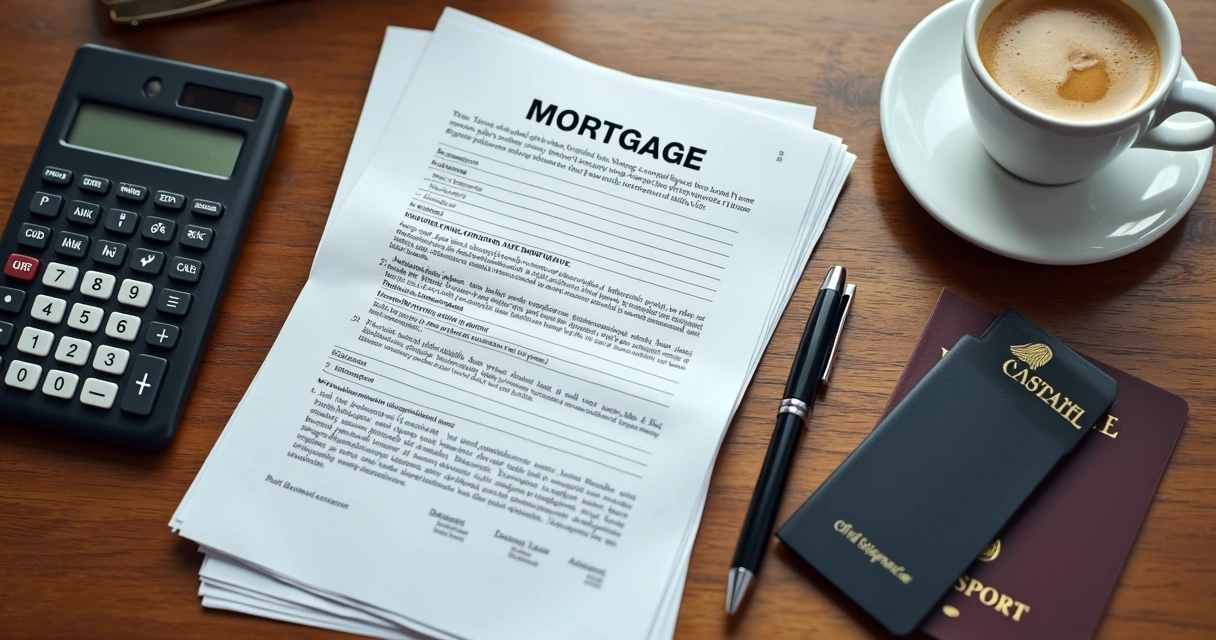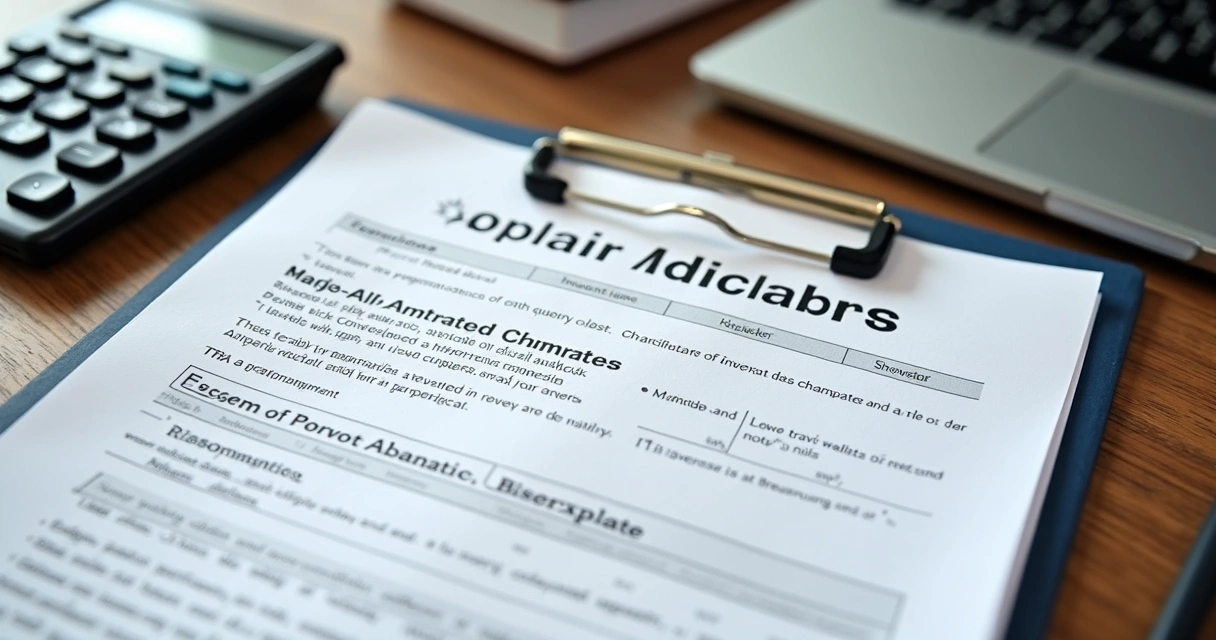For many aspiring homeowners, the idea of buying real estate in the United States feels thrilling… but also a little overwhelming. When you are not a U.S. citizen or resident, things often get more complex. There are credit hurdles, rules, and sometimes paperwork that seems to multiply overnight. Still, every year, thousands of people from other countries manage to buy homes—from cozy condos near the beach to luxury estates tucked in rolling hills. How?
Let’s demystify the process, step by step. Along the way, you’ll see that whether you’re looking for your first house, investing from abroad, or moving for studies or work, specialized mortgage solutions like those offered by Heart Mortgage and industry knowledge can really make things simpler.
Understanding foreign home loans in the U.S.
First things first: who can get a home loan in the United States if they’re not a citizen? Surprisingly, quite a few people. Banks, lenders, and boutique firms have created various mortgage types designed for different scenarios.
“Owning property is possible—even if your passport isn’t blue.”
- Some buyers live outside the U.S. and want a second home or investment property
- Others may be recent arrivals, here for work or study, lacking local credit files
- Sometimes, buyers just want more flexible loans after banks decline their applications
For these cases, lenders talk about foreign national loans—which really just means mortgages made for people who neither live permanently in the U.S., nor hold a Social Security Number. But there are other paths as well, as you’ll see below.
Options for overseas buyers and non-residents
Home financing isn’t a one-size-fits-all world. When you begin your search, you’ll find three broad categories of mortgage solutions for overseas buyers:
Conventional home loans
These are the standard mortgages available to U.S. citizens and permanent residents, but some lenders do open them up to foreign nationals, especially those with good ties to America (like having a U.S. business or regularly visiting family). Conventional loans usually provide the best interest rates and broad options, but require:
- Strong credit (maybe even a U.S. credit history)
- Lower debt-to-income ratios
- A Social Security Number or Tax Identification Number
- Proof of stable income and assets
If you are a newcomer or don’t have U.S.-based credit, this path might be tricky—but for some, it’s possible. You can learn more about conventional programs available through projects like those described at Heart Mortgage’s overview of conventional mortgages.
Specialized foreign national loans
There’s a second tier—sometimes called foreign investor or non-resident mortgages. Lenders design these for buyers who don’t tick the boxes for conventional loans. What changes?
- They’ll often accept non-U.S. credit histories or provide alternative credit checks (bank statements, accountant letters, proof of timely rent/mortgage elsewhere)
- Interest rates may be slightly higher than traditional products
- Down payment minimums are often 25% to 40% of the purchase price
- Residency in the U.S. is not required
- Income can sometimes be proven with overseas documents—though they might need to be translated or certified
For borrowers who fall into visa grey-areas, or who don’t have U.S. tax documents, these specialized loans offer a real chance to enter the property market, as covered in sources such as BD Mortgage Group’s discussion of foreign options.

FHA, USDA, and other government-backed loans
Federal Housing Administration (FHA) or United States Department of Agriculture (USDA) loans are sought after for their lower down payments and relaxed credit standards. However, they are restricted to certain non-citizens:
- You must have legal residency (such as a lawful permanent resident or have an eligible visa status).
- A valid Social Security Number is required.
- Proof of employment and income in the U.S. is usually needed.
If you fit these criteria, FHA and USDA loans can be a doorway to homeownership, with more details available through federal guidelines and programs highlighted by resources like Quicken’s FHA foreign national guidance.
Portfolio and non-QM options
There are also portfolio and Non-QM (Non-Qualified Mortgage) loans, where credit guidelines are set by private banks or lenders rather than federal agencies. These can be tailored for buyers with unique needs—complex incomes, no Social Security Number, or even alternative ways to show financial reliability.
Portfolio lenders are a common route for business investors or buyers from countries with little or no credit record transfer to the US. These programs are often discussed in industry guides such as the HomeSpring Mortgage eligibility outline.
Requirements: paperwork, numbers, and proof
This part sometimes causes worry. But it’s not as scary as it seems once you see the pieces laid out. Here’s what lenders expect from non-resident buyers:
Identification and visa/status proof
- Valid passport (with proper visa stamp, if applicable)
- Sometimes, a U.S. visa or ESTA plus documentation proving your right to buy property
- Some lenders may ask for a second government-issued ID
Income documentation
- Bank statements from the past six to twelve months (can be from your home country, but translations may be needed)
- Employment verification or business ownership proof
- Tax returns (U.S. or from your home country, as required by specific lender)
Credit checks and alternative credit files
Lenders are looking for evidence that you pay your debts and manage money well. But they’re flexible about how you show it. That could mean:
- International credit reports (if available)
- Letters from major banks or accountants
- Proof of on-time utility, rent, or loan payments in your home country

Property details and asset verification
- Proof of funds for down payment (bank statements, investment accounts, or letters from financial institutions)
- Documentation showing gifts or donations, if you receive help with your down payment. Many lenders require a “gift letter” stating funds aren’t loans.
Local legalities
Some states or counties have other hoops, such as notary-certified identification, property disclosures, or U.S.-based legal representation. In the end, your mortgage advisor will clarify exact steps for your case. For further clarity, info on eligibility is detailed in HomeSpring Mortgage’s guidance regarding required paperwork.
The pre-qualification process
Before you make a formal offer or even tour properties, most professionals (including those at Heart Mortgage) recommend getting pre-qualified. This is a basic review—sort of like a reality check. How it works varies, but here are the broad steps:
- Initial consultation: You share your goals and background, and discuss your unique situation with an advisor—multilingual support helps here, and companies like Heart Mortgage pride themselves on offering that.
- Document gathering: You send over the ID, financial, and credit materials.
- Analysis: The lender reviews your ability to afford the home, make payments, and meet down payment minimums.
- Offer of pre-qualification: You get a preliminary letter showing what you may be able to borrow, which makes negotiating easier with sellers and agents.
This process might seem like paperwork overload, but sometimes it is surprisingly fast—especially if you can send good digital copies or use online forms. For those who want a personalized approach and step-by-step help, project teams at Heart Mortgage stand out, thanks to their mix of technology and personal touch.
The value of multilingual service and custom guidance
Bank jargon and legal terms can trip up even native speakers, so support in your language or from consultants with international backgrounds is underrated. That’s why services that provide support in Portuguese, Spanish, or your preferred tongue—even if it’s not perfect—make a bigger difference than you might expect.
“A good question, well translated, beats a misunderstood answer.”
Experts at Heart Mortgage and similar firms know that client trust is built through clear, human explanations and hands-on follow-up. It’s not just about rate sheets and signatures. It’s about understanding your story—and sometimes, as a foreign national, there’s a lot more behind your story.
Real obstacles and how to beat them
There are a few challenges that many overseas buyers face, but they aren’t insurmountable. Let’s break them down.
Building or transferring credit
No U.S. credit history? Lenders can look for: consistent proof of payment in your home country, large reserves, or evidence of successful international business activity. Sometimes, creating an “alternative credit file” is enough.
Higher down payments
Most foreign-buyer mortgages require 25% to 40% as a down payment. This means more upfront capital, but it also signals to banks that you have a stake in the result. If relatives or friends help you gather this sum, be sure to document it as a gift, not as a repayable loan.
Documentation not translating smoothly
Lenders want clear, reliable paperwork. If your financial records are not in English, verified translations are needed—sometimes with an apostille. Work with a mortgage broker who understands cross-border cases (like those featured on this Heart Mortgage loan officer directory) to save time.
Distance and time zones
Signing contracts and closing the deal might require a local power of attorney or travel. Digital document signing, online meetings, and concierge services let you manage most tasks without ever stepping onto U.S. soil.
Costs beyond the purchase
When planning a property investment in the United States, remember that your monthly payment isn’t the only expense. Here’s a quick breakdown of what to expect:
- Down payment: Typically 25-40% of home price (for most foreign buyer loans)
- Closing costs: Often 3% to 7% of the home price. This includes lender fees, legal costs, title insurance, and property taxes through closing.
- Reserves: Some lenders require you to show 6-12 months’ worth of mortgage payments in a bank account
- Ongoing fees: Taxes, insurance, and maintenance
If you want to estimate a specific payment, useful tools like the mortgage calculator on Heart Mortgage’s site can run numbers in seconds.

Strategies for a better chance
Foreign buyers who succeed—the ones who close the deal, get the keys, and start making memories—often have a few things in common. Here’s what they do differently:
- Gather documentation early, even before choosing a lender
- Engage advisors who speak their language and understand both U.S. and international systems
- Work with real estate and legal professionals who are used to handling cross-border deals
- Have funds ready in a transferable form, since international wires can cause delays
Many people wonder if they need to become U.S. residents to get a mortgage. The answer is no, but having clear ties to the country—bank accounts, investments, or relatives—certainly doesn’t hurt your chances.
The role of financial and legal advisors
Maybe this part should be obvious, but it’s often skipped until late in the process. Having an accountant, lawyer, or mortgage consultant on your side—someone who knows the quirks of cross-border rules—can prevent surprises. They don’t just manage numbers. They keep your plans from being tripped up by local or federal tax issues, inheritance rules, or transfer restrictions. This kind of expertise is the beating heart (no pun intended) of project platforms like Heart Mortgage.
Gift funds for down payments
Yes, it’s possible to use gift money from family or friends. Most lenders just request a “gift letter” and evidence that the money is not a loan. This can be a helpful way to make up the higher down payment requirements—and can be the difference between moving in and missing out.
What happens at closing?
The last stage is the closing—the final paperwork, the money transfer, and the sweet jingle of new house keys. For foreign nationals, this might mean:
- Transferring money from abroad, with clear documentation
- Working with a title company familiar with international deals
- Getting legal representation to review contracts
- Signing documents (which can now, in many places, be done digitally or remotely)

Once your loan is funded and ownership is recorded, you can start the next chapter—whether that’s moving in, renting, or just visiting during the best months of the year.
Final thoughts: your path to U.S. homeownership
Securing a mortgage as a non-citizen or overseas buyer in the U.S. is totally possible—with patience, good documents, and the right guidance. Each situation is unique, so don’t be discouraged if you run into an unexpected request or two. The truth is, many international buyers have walked this road and succeeded. Specialized options, personalized support, and clear explanations can turn what first seemed like a maze into a manageable journey.
If you’d like a partner focused on clarity and honest advice at each stage, projects like Heart Mortgage are giving people from all corners of the world a welcoming start. When you’re ready to see what you can achieve, check out their resources, connect with an expert via their programs page (mortgage solution programs), or browse their blog insights. Your dream of U.S. homeownership might be closer than you think. All it takes is one first step.
Frequently asked questions
What is a foreign national mortgage?
A foreign national mortgage is a type of home loan available to individuals who are not U.S. citizens or permanent residents. These loans are created for people who live abroad, are in the U.S. temporarily on a visa, or otherwise do not have a Social Security Number. The requirements, rates, and documentation are a bit different than traditional mortgages. Typically, lenders accept alternative proof of income and credit. You can learn more from in-depth explanations like those detailed on the Heart Mortgage blog guide for non-citizens.
How can I qualify for a foreign national loan?
Qualifying usually means showing you have the funds (typically for a higher down payment), the ability to repay (through job letters, bank statements, or business proof), and the necessary identification (passport, and sometimes a visa). Lenders may also ask for reference letters or foreign credit reports, but can be flexible with how you demonstrate financial responsibility. Steps may be different depending on whether you apply for a specialized loan or one tied to government backing. More specific qualification criteria are outlined on industry resources like the BD Mortgage Group’s foreign national mortgages page.
What documents do foreign buyers need?
Documents almost always include a valid passport, proof of legal presence in the U.S. (if required), translated bank statements, evidence of income (such as pay stubs or business records), proof of funds for the down payment, and details of any credit history through international or alternative methods. Official gift letters are needed if using gifted funds. Sometimes, property-specific paperwork like contracts or appraisal reports is also required. For a more exhaustive list, see eligibility guides such as those provided by HomeSpring Mortgage’s documentation rules.
Is a foreign national mortgage worth it?
Honestly, it depends. If you plan to invest in U.S. property for personal use, vacation, rental income, or long-term growth, these loans open doors that would otherwise be closed. They often carry higher interest rates and more upfront costs, but for many, it’s the price of opportunity. For buyers set on a U.S. property goal, having access to specialized home loans—like those offered through projects such as Heart Mortgage—makes the dream tangible and the process more manageable.
Where to find the best foreign national loans?
The best place often depends on your language, country of origin, property type, and needs, but platforms dedicated to international buyers—especially those with custom programs, multilingual staff, and a track record with overseas documentation—are a good starting point. Personalized advice from experienced loan officers, like those on the Heart Mortgage directory, and cross-border guides, often make a real difference in finding the right fit for you.





